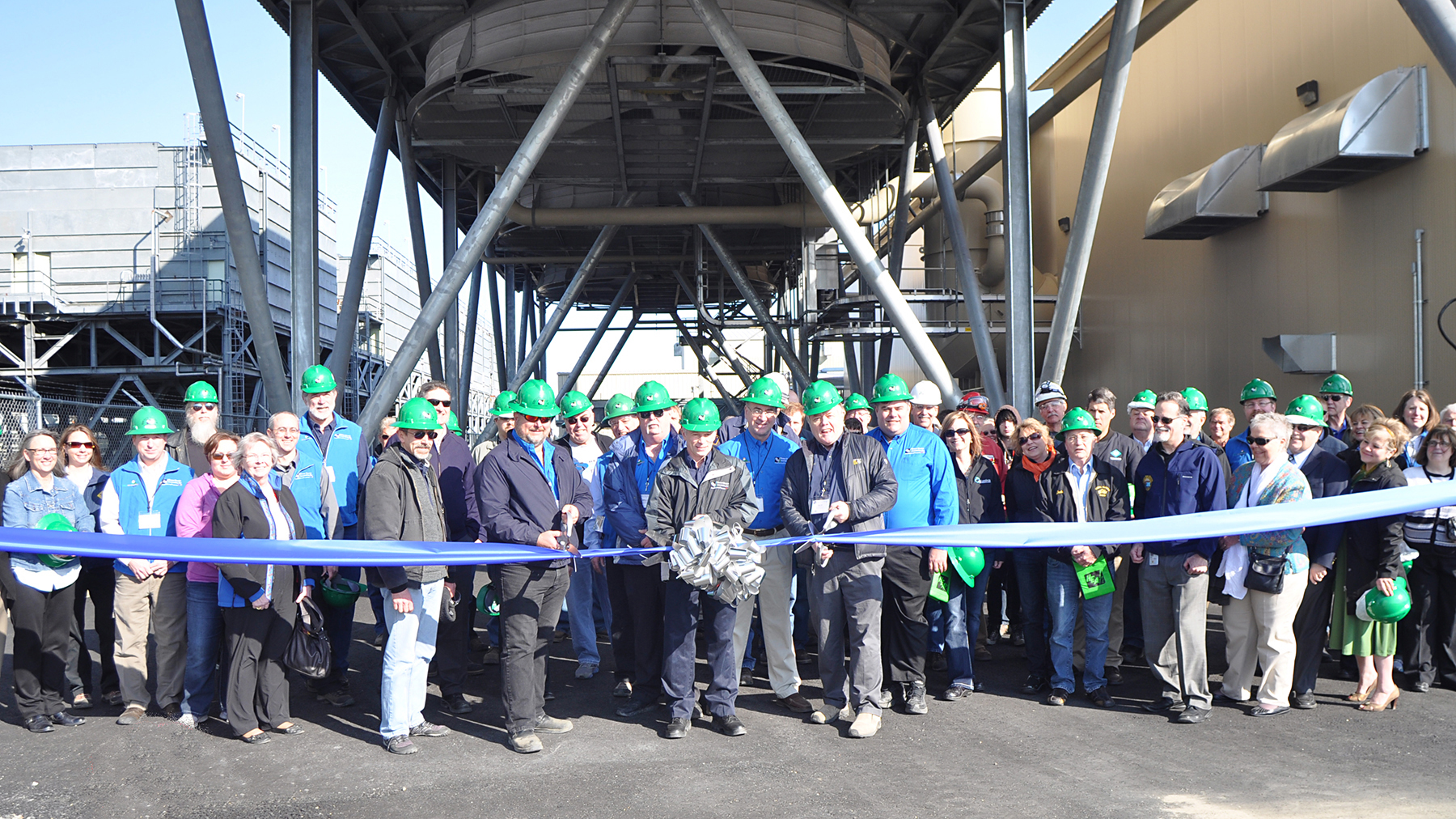“It’s humming!” Rick Roeske, shouted over the deep vibrations emitting from the maze of whirring turbines and endless pipes crisscrossing within the new Nikiski Combined Cycle facility, where the majority of the Kenai Peninsula’s power is now produced.
The facility is considered the cornerstone of Homer Electric Association’s Independent Light program, which provides locally produced power for the Kenai Peninsula.
Homer Electric Association’s Larry Jorgenson led Roeske, executive director of the Kenai Peninsula Economic Development District, and a handful of people through one of the first guided public tours of the facility since it went online on Jan. 1.
Approximately 120 community and industry members, and plant employees attended the dedication ceremony and subsequent tours May 1 in Nikiski, said Joe Gallagher, HEA’s director of member relations.
Each person was required to wear an evergreen-colored hard hat, neon earplugs and clear goggles near the behemoth machinery.
The Nikiski plant has been generating energy since early fall in 2013. Power was purchased from Chugach Electric until late last year, until the Nikiski generation plant became completely independent, said Gallagher.
The 80-megawatt plant added 34 new jobs into the Kenai Peninsula community. It uses a new steam turbine, and a previously existing natural gas turbine to produce power, 18-megawatts of which come from steam produced from exhaust heat, Gallagher said.
HEA also purchased the Bernice Lake Power Plant from Chugach Electric, and soon a combustion turbine will be added to the generation portfolio in Soldotna, according to an HEA fact sheet. Research is on-going to the possibility of a hydroelectric project on Grant Lake, according to the HEA fact sheet.
David Nardini toured the plant to see how it was set-up. He spent four years at Kenai Peninsula College studying operations systems and instruments, and wanted to take advantage of the opportunity to explore operating machinery, he said.
In the Nikiski plant, tour groups walked past tubing containing steam heated to nearly 1,000 degrees, car-sized fans cooling instruments, and the dispatch room, which holds nearly a dozen computer screens constantly displaying the status of the different systems.
Pastor Rick Cupp, minister at Kenai Fellowship, was asked to say some words of gratitude for the new plant. Before his opening remarks, he stood under a cloudless spring sky, hit by gentle, but chilly wind gusts as he ate some of the snacks provided for the event.
“It is a nice day for an opening ceremony,” Cupp said. “It seems to be a major step forward for HEA.”
Later that evening, HEA held its annual meeting at Soldotna High School. The results of the election of directors was announced: Kelly Bookey of Kenai in District 1, which includes Kenai, Nikiski and parts of the Soldotna area; Dick Waisanen in Distict 2, which includes the Soldotna, Sterling and Kasilof areas; and Don Seelinger of Seldovia in District 3, which includes the south Kasilof and Kachemak Bay areas.
Each incumbent in the three districts ran uncontested in this year’s election.
Following the annual meeting, the board of directors met to elect officers for the upcoming year. Dick Waisanen of Soldotna was selected to serve as president; Bill Fry of Homer was named vice president; David Thomas of Kenai was named secretary/treasurer; and Jim Levine of Homer was named deputy secretary.
The annual meeting drew a large crowd with approximately 400 people attending, said Gallagher


